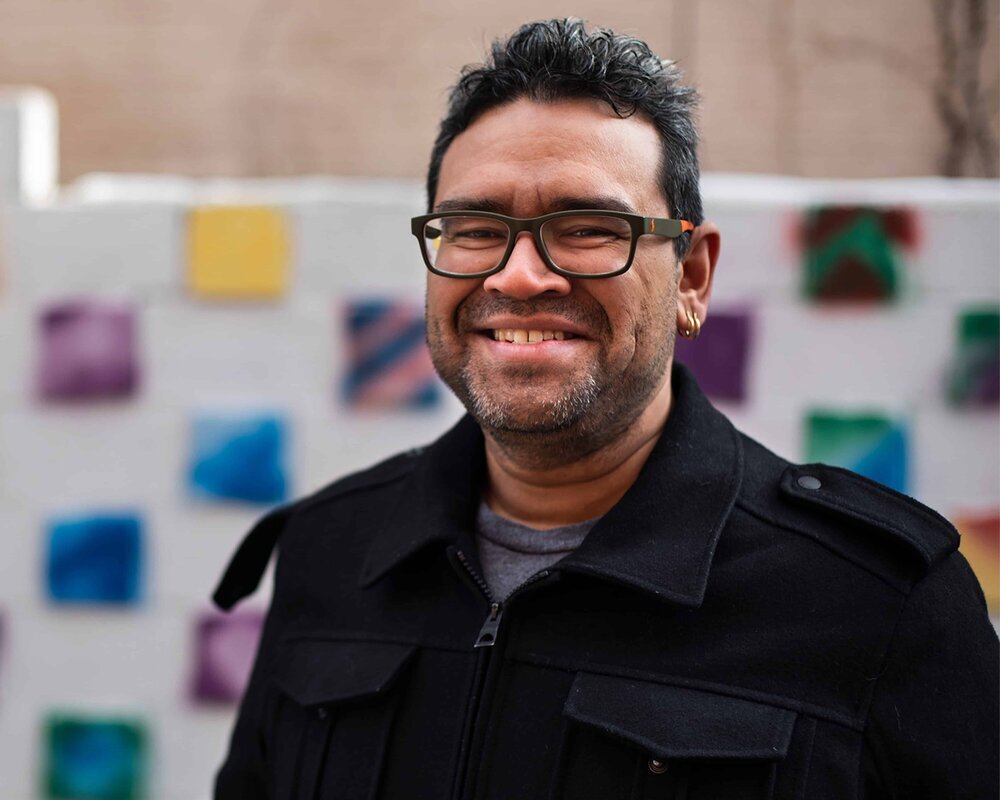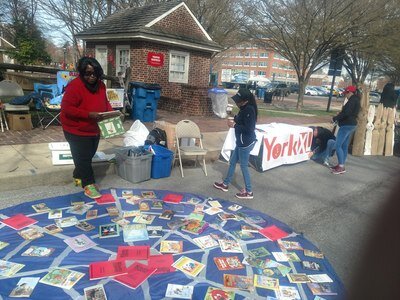"Public engagement" is about knowing your neighbors, not planning a meeting.
Sal Galdamez of York XL.
Getting community input on government processes and projects is a fickle business. It typically involves following a pre-planned path of sending out a couple notices (rarely in the places where community members are likely to find them, particularly residents who don’t frequent the government website or email lists), hosting a few public forums where people are invited to make brief comments, and then issuing a final decision on the project. (Spoiler alert: The original plan will probably pass with minimal modifications.)
As we’ve written before at Strong Towns, most public engagement processes are worthless or worse than worthless. But it’s not solely the fault of government leaders or staff. Most are just trying to do their jobs, and this is the method that’s been used for years. It might even be written into city law. With dwindling municipal budgets and overworked staff, it’s a heavy lift to ask someone to invent a completely new process.
So what’s a better way to get public input on a project? It starts with throwing out the very foundation of this question. We shouldn’t be seeking public input for a project; we should get to know our neighbors so that their needs are front and center in our mind, and create proposals, ideas or projects from there. This is work that anyone can and should do—elected official or just regular resident who cares about making their community stronger. You have the ability and the power to start doing this listening and connecting today.
Salvador “Sal” Galdamez knows this well. He’s been listening to neighbors and gathering people for change in York, PA for the last few years through the organization he founded, York XL.
Photo from a York XL community event.
Through “Street Meets,” Galdamez and his fellow organizers bring neighbors together to learn about each other’s needs. The model is very simple. York XL coordinates an event at a neighborhood intersection with the intention of getting to know the residents who live on the adjacent streets. These events have the trappings of a typical block party like food and beverages, activities for kids and often group project options such as cleaning up litter or planting a garden. But the goal of Street Meets is not entertainment or directing people to take on a specific project. Rather, it’s to get neighbors out meeting each other and working together. York XL is there to listen.
The traditional model for public engagement has basically become a script, Galdamez remarks. Government leaders might do something like set up a survey and send it out via email, “but you’re not going to get a representative sample that way. And then we make policy and funding decisions with bad data,” says Galdamez. York XL is committed to trying to get to know everyone in the city and listening to their needs, particularly residents whose voices are less likely to be heard in typical decision-making processes like the poor and people of color.
But for Galdamez, this process isn’t about painting unheard voices as victims to be pitied; it’s about empowering residents to take control of their neighborhoods’ future and not waiting for someone else to address their problems. “What we’re trying to do is get to know people and light a fire that says, ‘Look, you need to come up with a vision for your neighborhood, your block, your community,’” says Galdamez. “It’s really not up to anybody else to do it… And if you let other people do it, their vision is not going to be of you living here. Their vision is going to be of some big building that will ‘revive’ the neighborhood—but not for you.”
Photo from a York XL community event.
The Street Meets don’t exist to check “public engagement” boxes or count the number of people who attended. York XL is not affiliated with the government and their motivations are purely based on getting to know their neighbors and hear their concerns. Organizers knock on doors ahead of an event and get the word out beforehand, then when the day of the event arrives, they are simply present—not shoving fliers into peoples’ hands or demanding interaction. Galdamez says it’s often the children of the neighborhood that end up drawing residents out of their homes, because the kids want to come out to play, get some juice, or have their face painted.
One outcome of these efforts to listen to neighbors is an emerging idea that York XL is working on. “What if we could find out what everyone’s good at—to know where the artists, the gardeners, the people who can fix a fence live?” asks Galdamez. York XL is planning to build a mobile app that will help neighbors connect with one other to share their skills and resources. Galdamez offers the example of someone with a broken toilet and a landlord who neglects to fix it. Through a community app, that resident could find a plumber in their neighborhood, perhaps bartering something in exchange for the toilet fix, while also seeking support or even legal help to address the bigger problem of their negligent landlord.
Another project York XL is currently developing is what Galdamez calls “a geography of power.” The group is compiling a list of every local entity with any sort of power in York: philanthropic foundations, the utility company, the chamber of commerce, the YMCA, and so on. York XL hopes to get all of these groups’ public meetings on a central calendar, and then collaborate with neighbors to make sure a few York residents show up at every meeting, take notes, make public comments if needed, and share what happened with the broader community.
Photo from a York XL community event.
“People have to be able to attend or at least be in the know and really understand the big projects that are starting. [Then] they can be involved from the very beginning rather than the tail-end, when the government comes around to black and brown people asking for their buy-in,” says Galdamez.
He wants his fellow York residents to remember that elected officials work for them, not the other way around. “[The mayor is] not your boss. If you’re not helping steer the ship, then the ship is never going to go to where you want it to go and you’ll never see neighborhood benefits,” Galdamez explains.
In addition to the many creative approaches York XL is working on to bring neighbors together and become familiar with each other’s needs, Galdamez also offers some simple, concrete suggestions for local governments to become more transparent and accessible (which I’ve expanded upon below). Take these basic steps and you’ll lay the groundwork for a community where residents can more fully participate in decision making and guide the future of their city.
Make meeting minutes easily accessible. For any government meeting where minutes are taken, post them on your municipal website and organize them by date so they’re easy to find.
Decode regulatory language during meetings and in documents. If you’re leading a city council meeting or preparing a public document, define terms, acronyms and other government language so that regular people can understand what’s going on—not just folks with an engineering degree or 20 years of government employment under their belt.
Give your comprehensive plan its own website. Make this easy to find and navigate by section, with a search bar for quick information-gathering.
Make local statistics more readily available. Any data that the city has access to (crime numbers, high school graduation rates, employment stats, etc.), make it public so your community knows where you stand.
Forge real connections; don’t just plan meetings. This is the most important task of all: Know your neighbors and their needs. Don’t wait for a meeting with a prescribed format in order to hear the concerns of residents in your community. Be proactive about getting to know people, meeting them where they are and trying to see your town through their eyes.
Check out this recent webcast featuring Sal Galdamez and two other local leaders who are revitalizing their cities from the bottom-up.
Galdamez is a pragmatist who views political processes with a healthy dose of skepticism, but he also deeply believes in the strength of his community to accomplish what they need to and get things done.
“I keep coming back to the idea that we’ve got to be able to figure this out here,” says Galdamez of his 44,000-person hometown. “We have all the issues that cities have, but we’re in such a small contained area that we should be able to work together and figure it out.”








Local activists in Selma, NC, started small, but they’ve grown into a coalition of citizens, civic groups, and city leaders striving to improve housing, transportation, and the local economy.